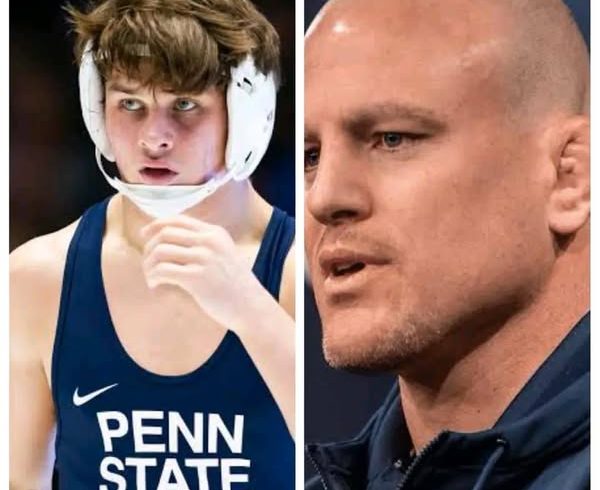Penn State Wrestling Part Ways with Star Player Following Heated Confrontation with Head Coach Cael Sanderson
In a shocking turn of events, Penn State Wrestling has severed ties with one of its star players following a heated confrontation with head coach Cael Sanderson. This decision marks a significant shift for the Nittany Lions’ wrestling program, one of the most successful and revered in college sports. The fallout from this altercation has left both fans and team members in disbelief, casting a shadow over a program that has been synonymous with dominance in collegiate wrestling.
The player in question, whose identity has not yet been officially released, was one of the team’s standout performers, known for his exceptional skill and leadership on the mat. This young athlete was expected to play a pivotal role in the team’s future successes, making his departure all the more surprising. Sources close to the team report that the confrontation between the player and Coach Sanderson escalated quickly, turning from a disagreement into a full-blown argument. Although the exact details of the altercation remain unclear, it’s evident that the tensions between the two reached a point where reconciliation was no longer an option.
Cael Sanderson, a legendary figure in the world of wrestling, is widely regarded as one of the best coaches in college sports history. Under his leadership, Penn State Wrestling has become a powerhouse, capturing multiple NCAA championships and producing numerous individual national champions. Sanderson’s reputation for discipline, focus, and creating a winning culture has made him a revered figure in the wrestling community. However, the latest incident highlights that even the most successful programs are not immune to internal strife.
The nature of the disagreement between Sanderson and the player points to a deeper issue of expectations, pressure, and perhaps differing visions for the future. While some speculate that the player’s personal ambitions or frustrations over his role on the team may have contributed to the fallout, others suggest that it was Sanderson’s exacting standards and uncompromising approach that led to the clash. Regardless of the cause, the result is a significant loss for Penn State Wrestling, as they must now move forward without one of their brightest stars.
The decision to part ways with the player was not taken lightly. According to reports, Penn State Wrestling’s staff and athletic department weighed the potential impact on the team’s dynamics and the long-term implications for the program. In the end, it was determined that the relationship between the player and Sanderson had become untenable, and the parting of ways was the best course of action for both parties.
This event raises important questions about the challenges faced by elite sports programs, particularly when it comes to balancing the egos and personalities of athletes with the demanding expectations of coaches. While Sanderson’s approach has undoubtedly brought success to Penn State, this incident serves as a reminder of the human element behind the sport. It underscores the pressure that athletes face to not only excel on the mat but also to align with their coaches’ vision and expectations.
The future of the Penn State Wrestling program will now hinge on how they recover from this setback. Coach Sanderson will likely need to address the incident with the team and ensure that the remaining athletes stay focused and united in their pursuit of future championships. For the star player, his next steps will be critical in determining the trajectory of his wrestling career, as he will likely seek opportunities elsewhere to continue his competitive journey. Both parties must now navigate the aftermath of this incident, with the hopes of emerging stronger, whether as individuals or as a program.
In the coming weeks, more details may emerge about the altercation, but for now, the focus is on what this means for the future of Penn State Wrestling. As one of the most successful programs in the country, the stakes are always high, and this moment of adversity will undoubtedly test the resilience of both the coaching staff and the athletes left behind.

